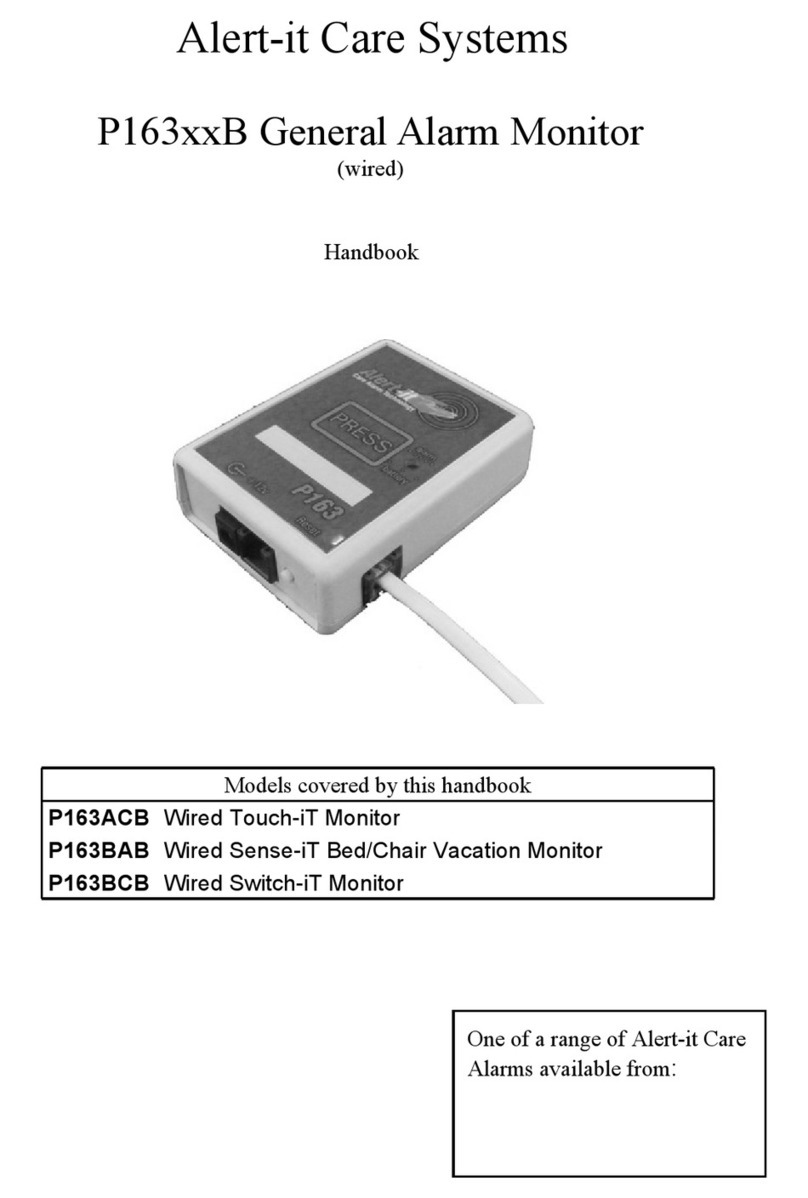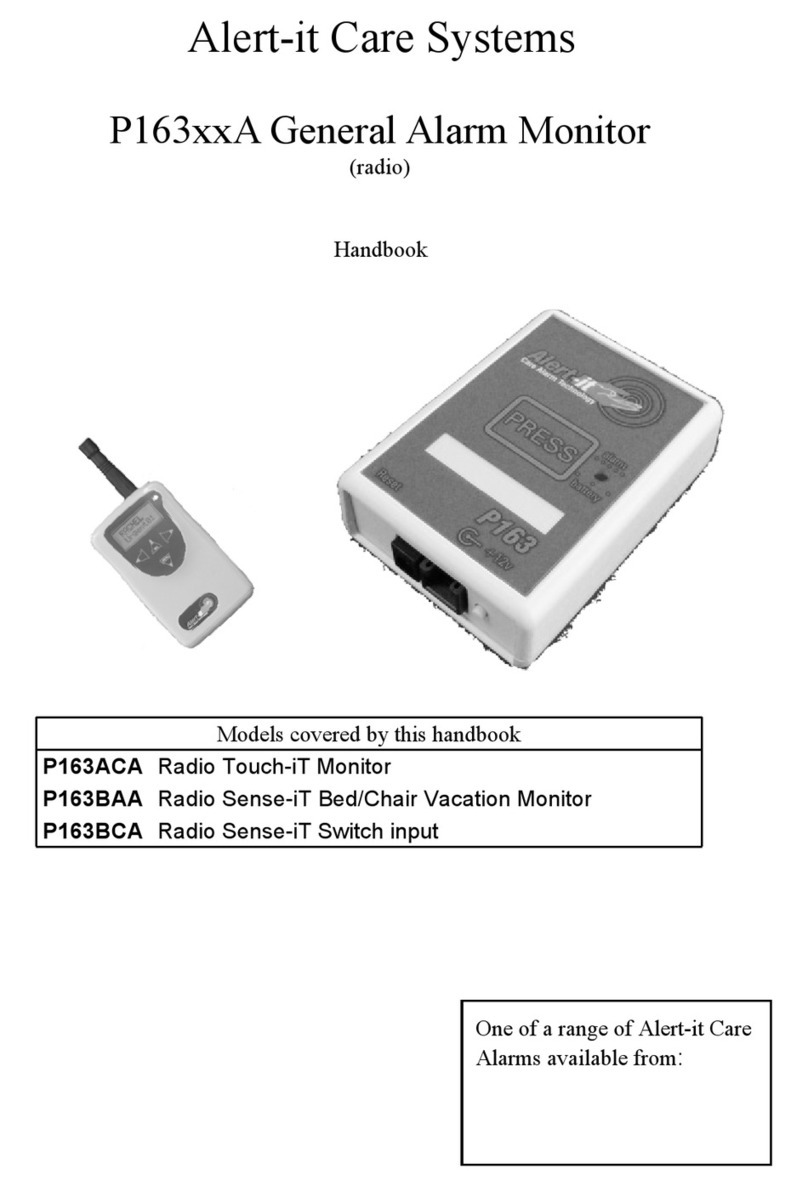UH1115 P161B Door Activity Handbook.ppp page 5 of 12 UH1115 P161B Door Activity Handbook.ppp page 5 of 12
Operation
Using the keys.
Inserting the BLUE key will deactivate the alarm, but also send
FAULT01 to the pager if left inserted for more than 30 minutes. The
RED key also deactivates the alarm but with no warning at the pager.
Door Activity Detection
When the door opens the P161 will send an alarm, leaving the front red led illumi-
nated. The pager will show URGENT 01 or the autodialler will start the dialling
sequence. It is normal for internal doors for the unit to self reset when the door clos-
es, hence the alarm is fleeting on the pager as the door is opened, allowing staff to
judge if attendance is needed depending on the time of day and the vulnerability of
the user. To ensure the alarm is heard the notification will last 10 seconds after the
door closes. The monitor can also be supplied as latching (as often required for fire
and external doors) to force staff to attend
Staff Call
While the door is closed, pressing the HELP key will send an ASSIST alarm to the
pager, allowing staff to summon help to the door.
Cancelling the alarm:
If the unit is programmed to latch the alarm, then pressing HELP until a beep is
heard will reset the alarm.
Temporary deactivating the monitor
If the HELP key is pressed while the door is open, then the alarm will be cancelled,
and the unit remain in standby until the door re-closes, when the monitoring will
resume. This allows doors to be left open in the day or for visitors to arm the door
before leaving
Alarm indication at the pager/receiver
Alarm Detect Delay P161 Pager P155 /P117C
Open 0 sec LED Flash URGENT 01 Continuous tune + alarm
Close 10 sec LED Off Alarm Clear Alarm Clears
HELP 0 sec LED Flash ASSIST 01 Intermittent tune + alarm
TEST Less than 1 sec LED Blink Node Name Green light flash
Battery
Low
- Fault 30 Intermittent tune, + alarm
Battery
Fail
- Fault 31 Intermittent tune, + alarm
Battery
Dead
The P162 LED makes chirping sound





























